Abstract
The results of 1,465,423 allele product determinations based on blood samples from Hiroshima and Nagasaki, involving 30 different proteins representing 32 different gene products, are analyzed in a variety of ways, with the following conclusions: (1) Sibships and their parents are included in the sample. Our analysis reveals that statistical procedures designed to reduce the sample to equivalent independent genomes do not in population comparisons compensate for the familial cluster effect of rare variants. Accordingly, the data set was reduced to one representative of each sibship (937,427 allele products). (2) Both chi 2-type contrasts and a genetic distance measure (delta) reveal that rare variants (P less than .01) are collectively as effective as polymorphisms in establishing genetic differences between the two cities. (3) We suggest that rare variants that individually exhibit significant intercity differences are probably the legacy of tribal private polymorphisms that occurred during prehistoric times. (4) Despite the great differences in the known histories of the two cities, both the overall frequency of rare variants and the number of different rare variants are essentially identical in the two cities. (5) The well-known differences in locus variability are confirmed, now after adjustment for sample size differences for the various locus products; in this large series we failed to detect variants at only three of 29 loci for which sample size exceeded 23,000. (6) The number of alleles identified per locus correlates positively with subunit molecular weight. (7) Loci supporting genetic polymorphisms are characterized by more rare variants than are loci at which polymorphisms were not encountered. (8) Loci whose products do not appear to be essential for health support more variants than do loci the absence of whose product is detrimental to health. (9) There is a striking excess of rare variants over the expectation under the neutral mutation/drift/equilibrium theory. We suggest that this finding is primarily due to the relatively recent (in genetic time) agglomeration of previously separated tribal populations; efforts to test for agreement with the expectations of this theory by using data from modern cosmopolitan populations are exercises in futility. (10) All of these findings should characterize DNA variants in exons as more data become available, since the finding are the protein expression of such variants.
Full text
PDF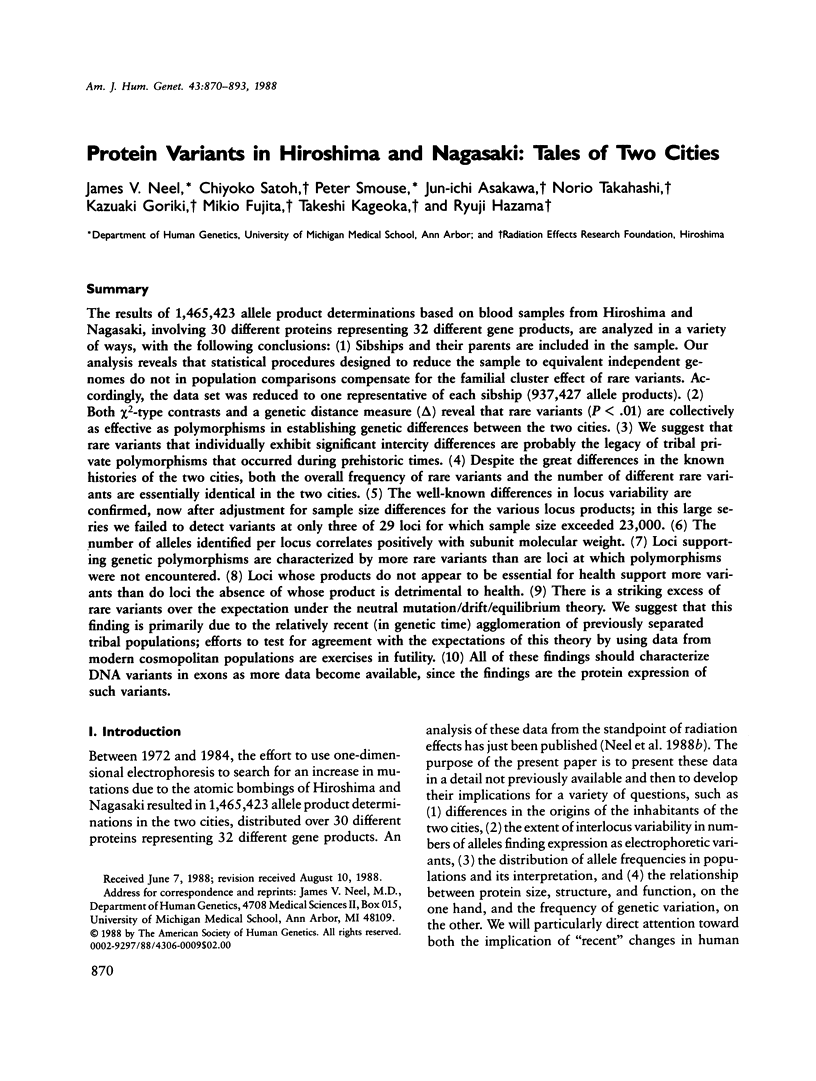
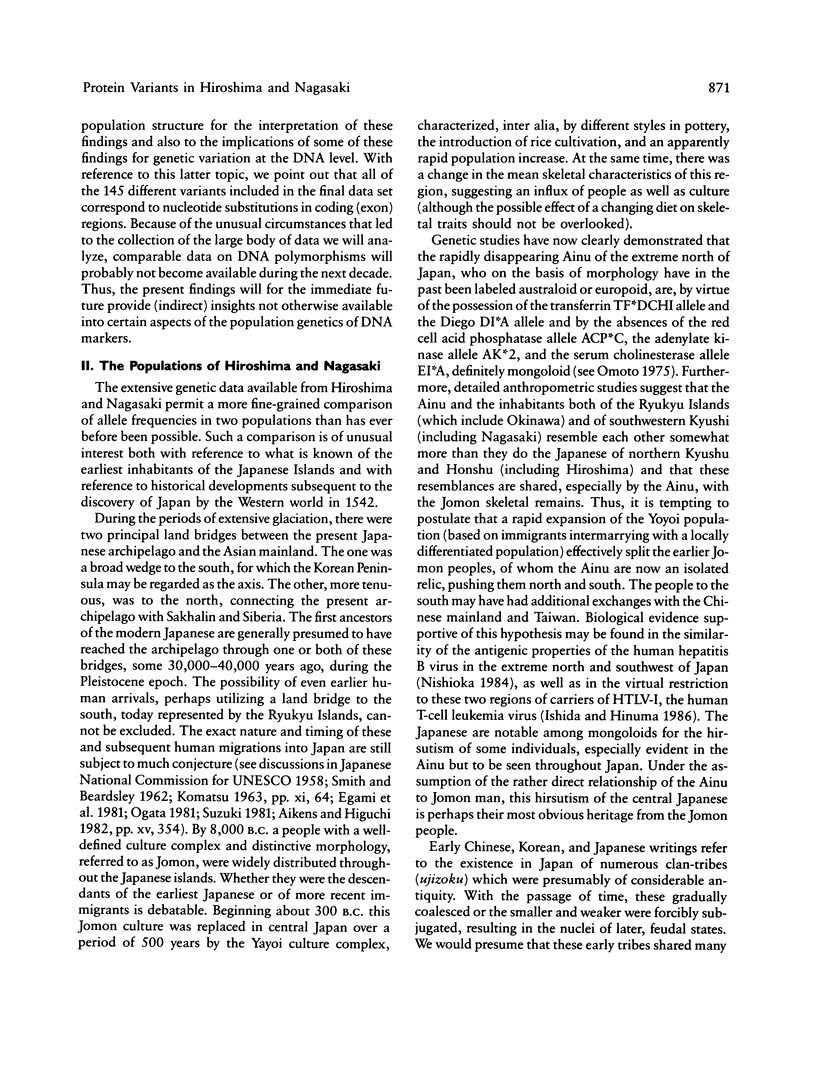
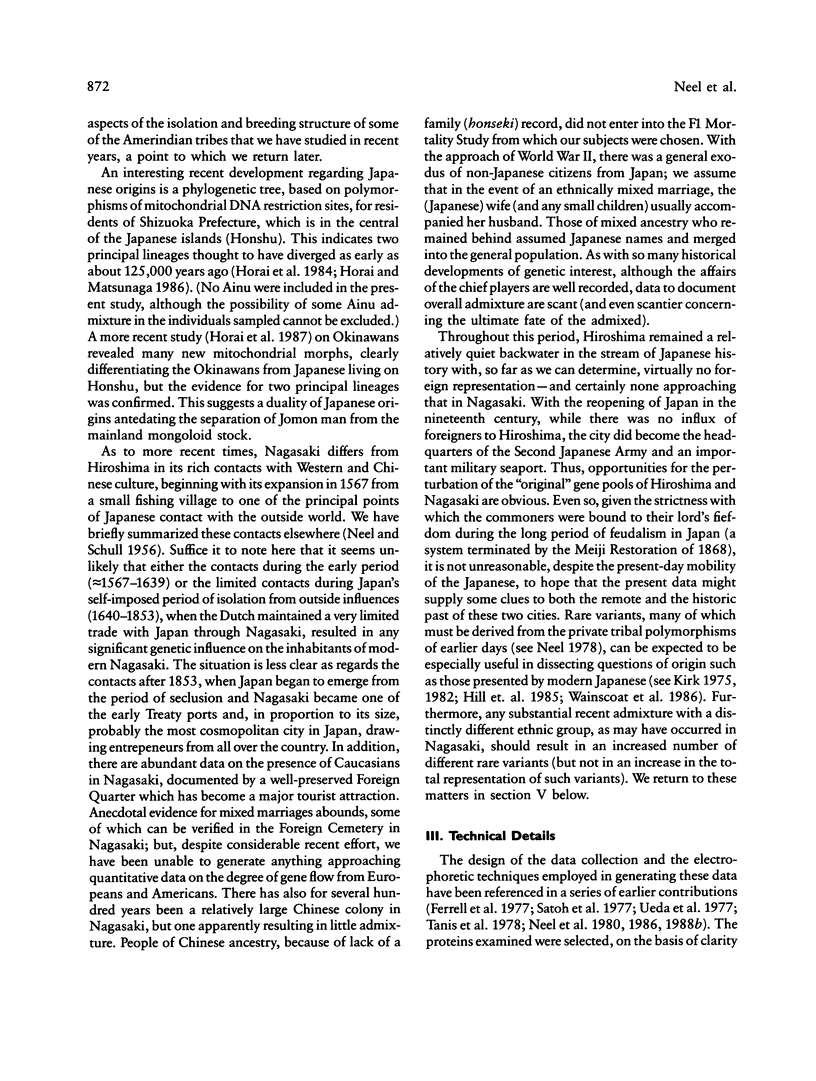

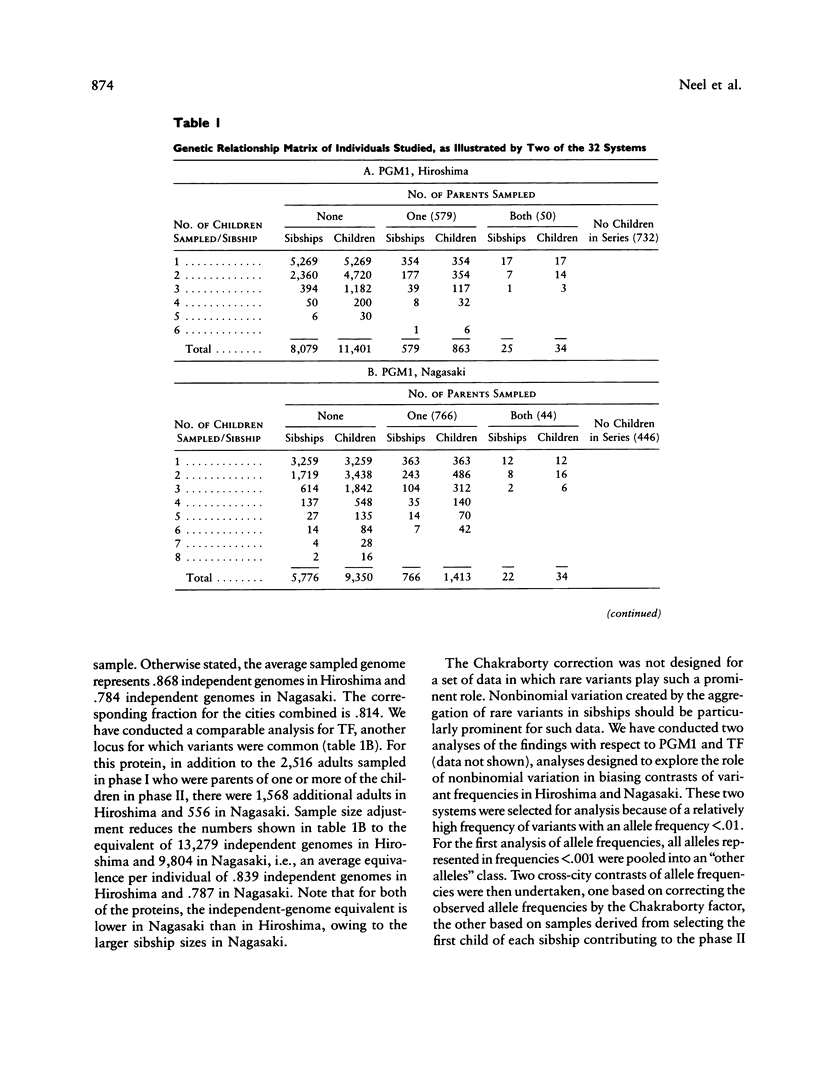
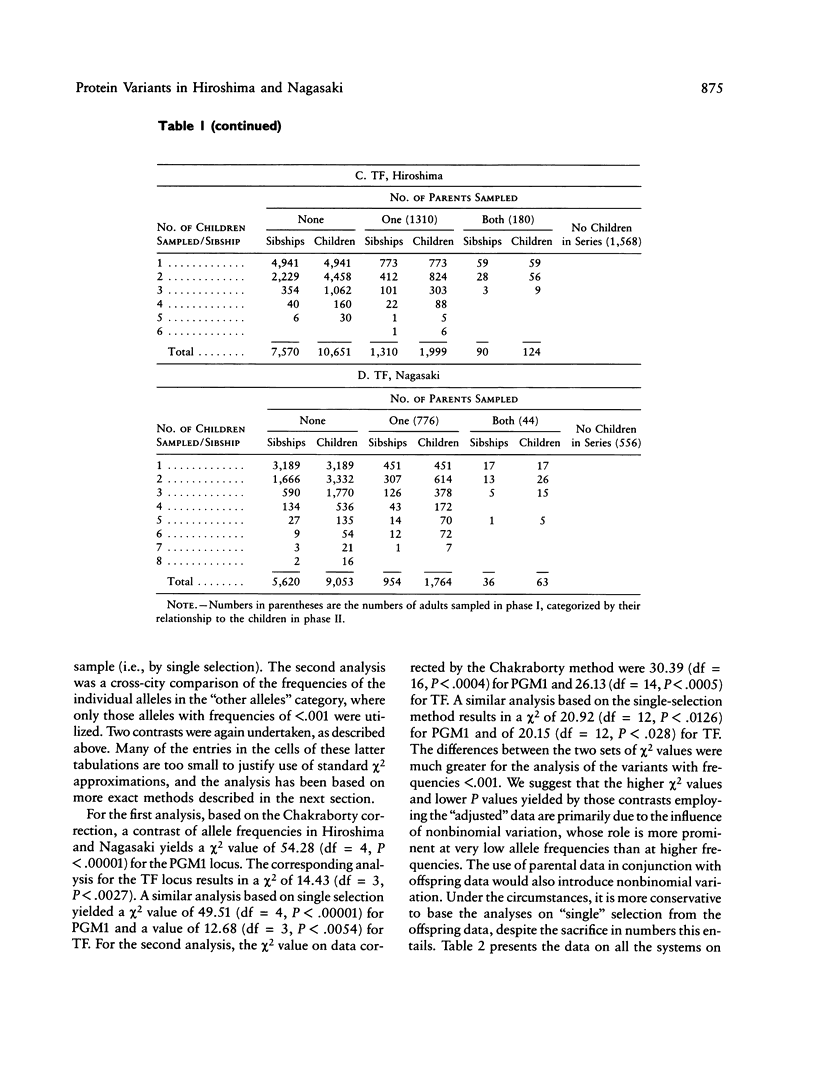
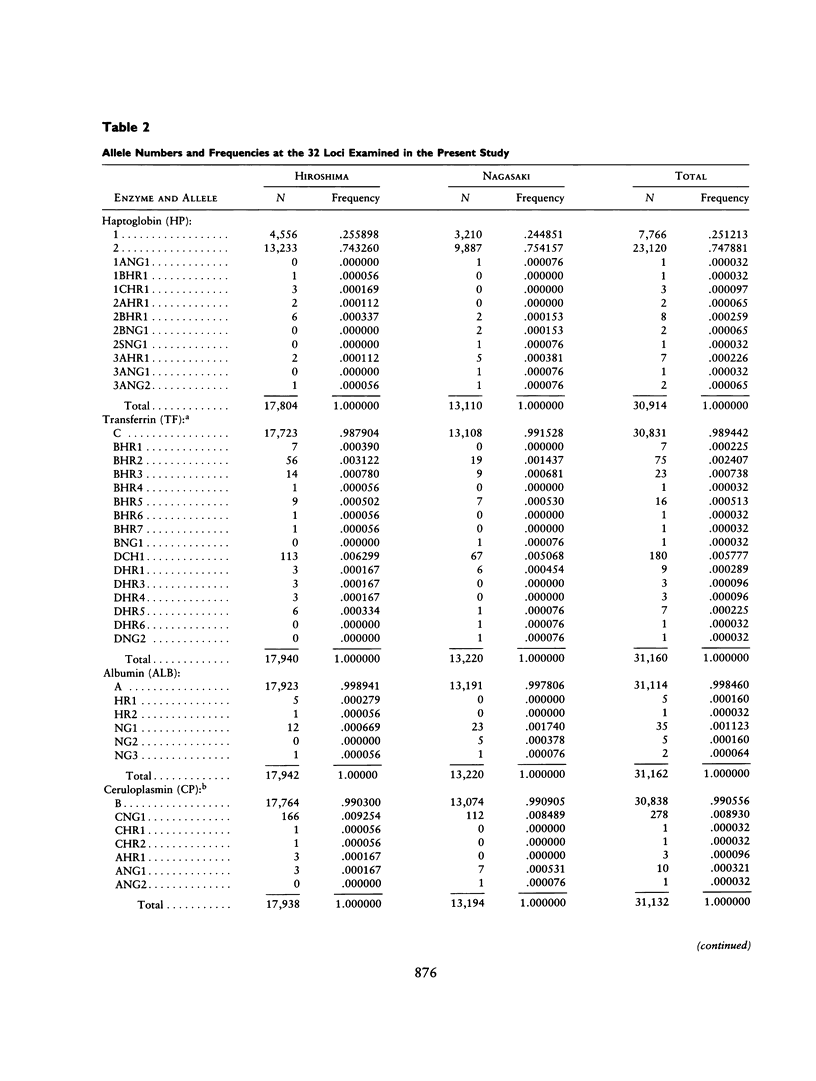

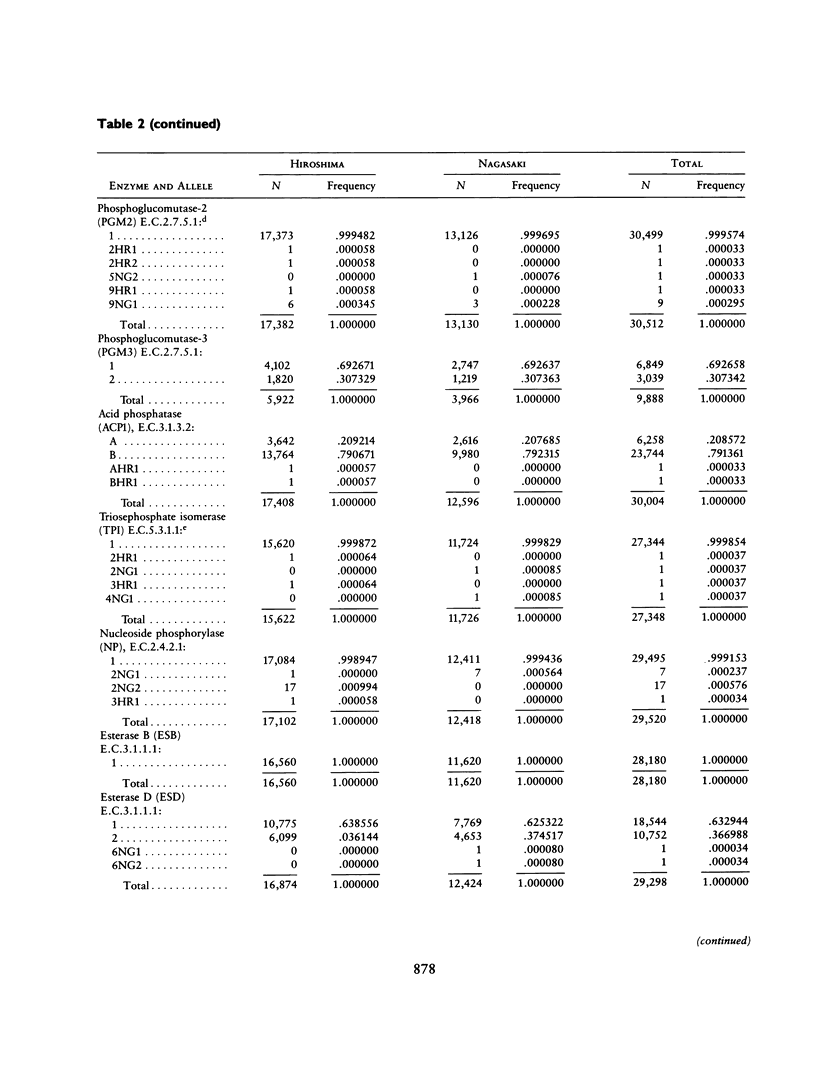
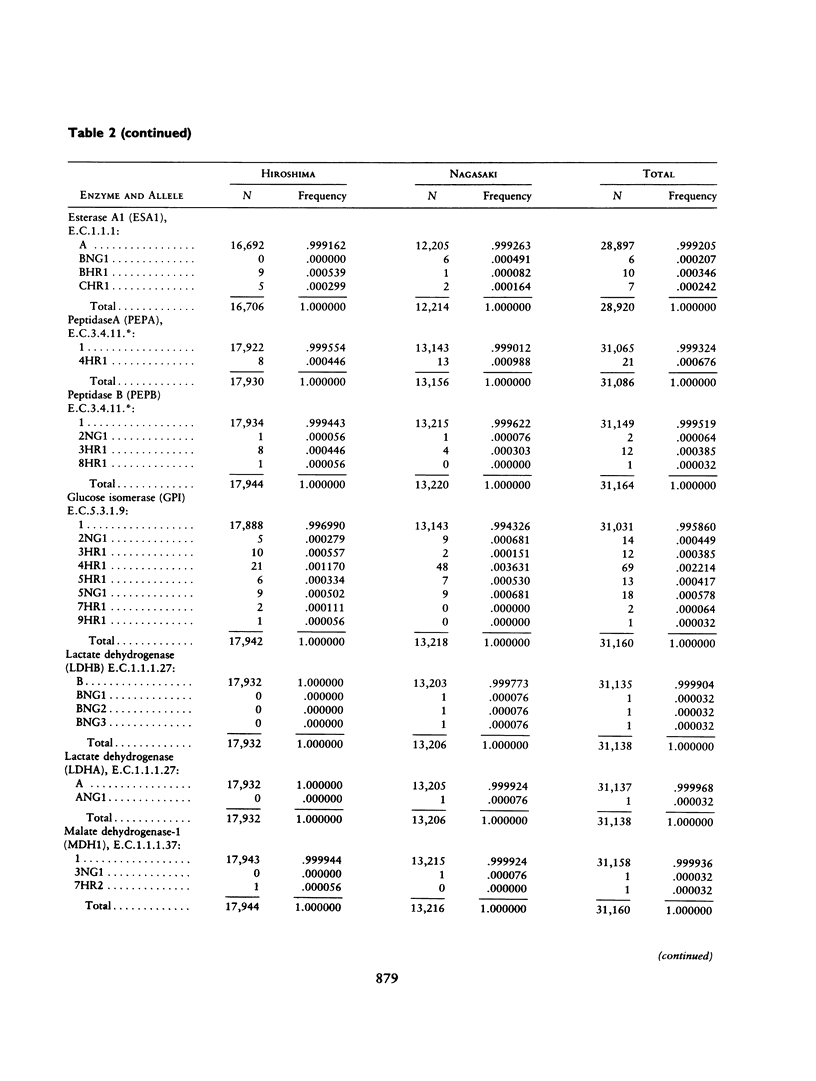
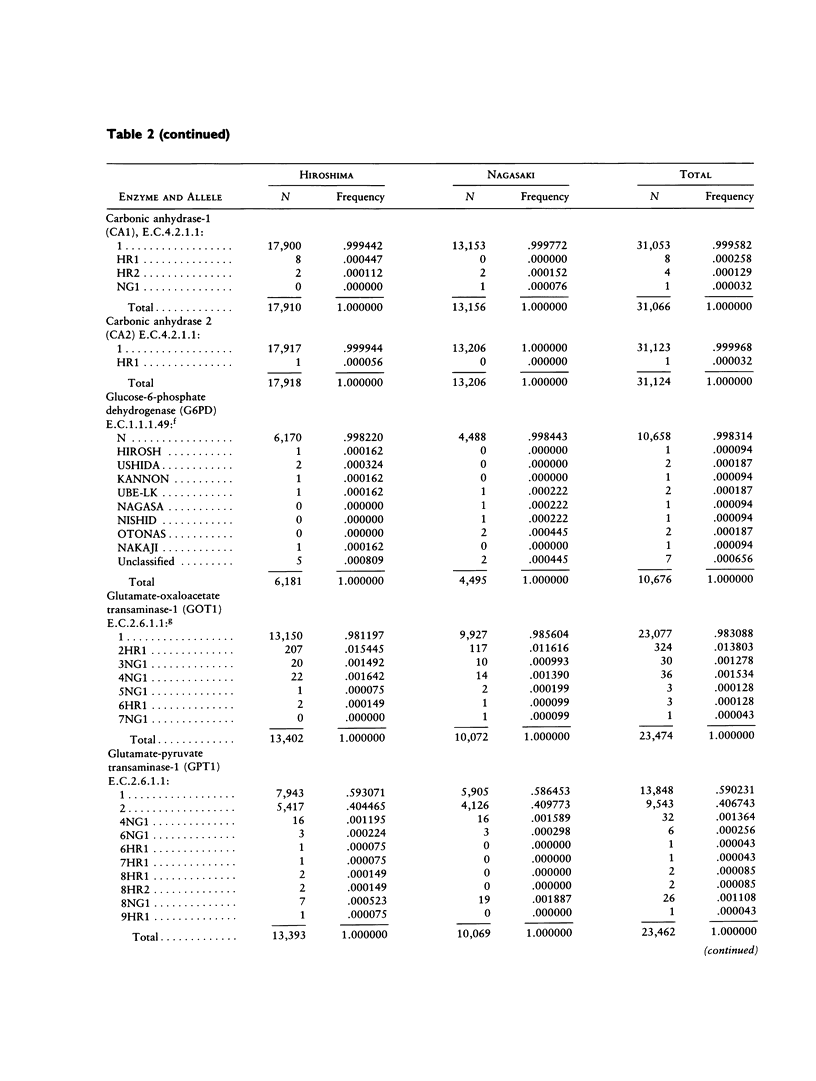
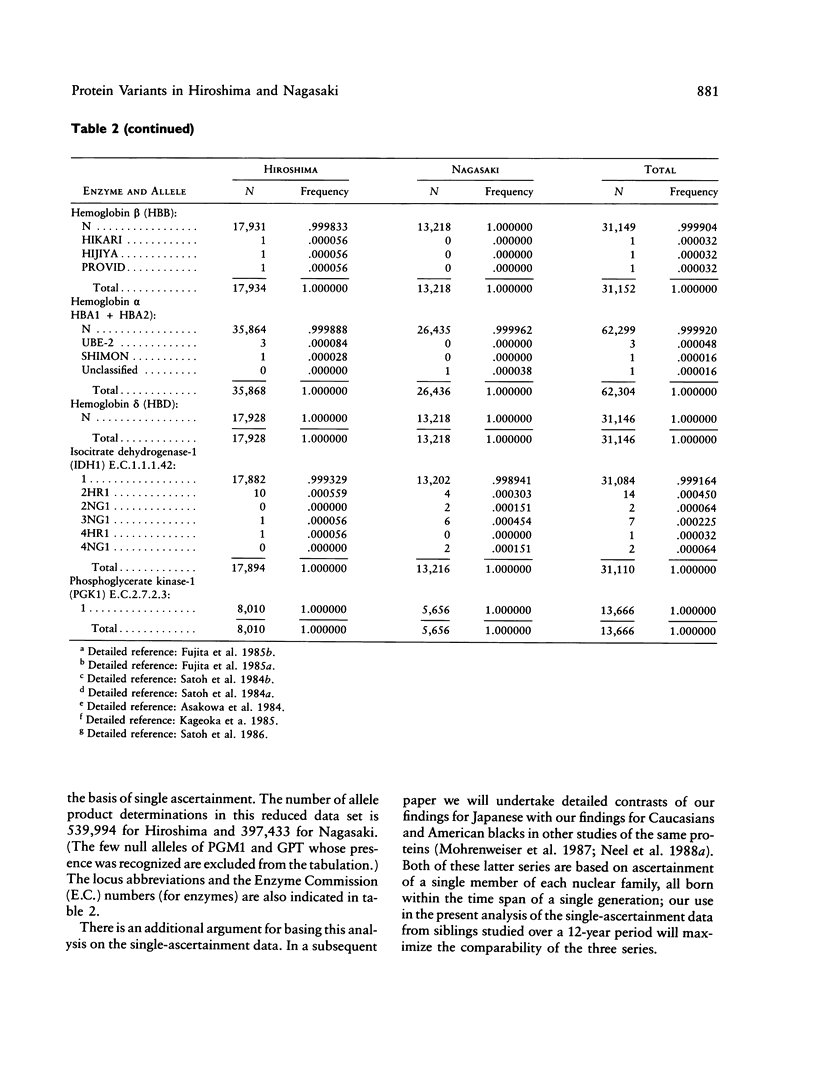
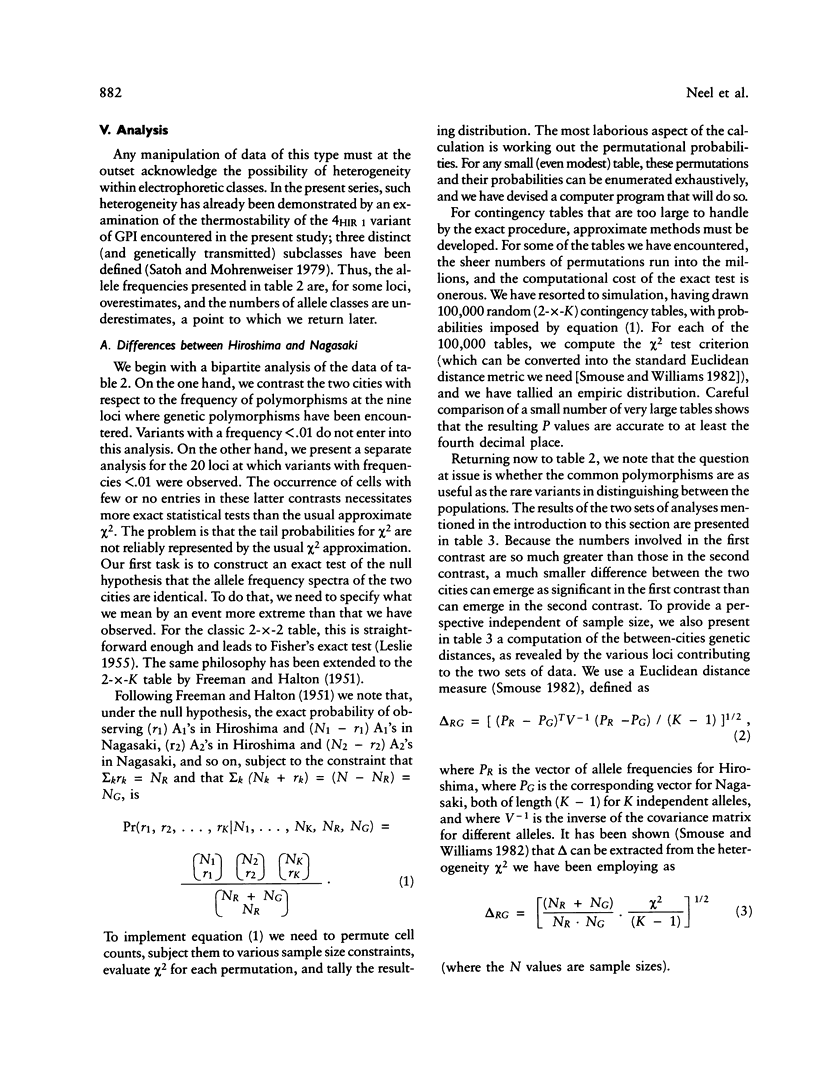
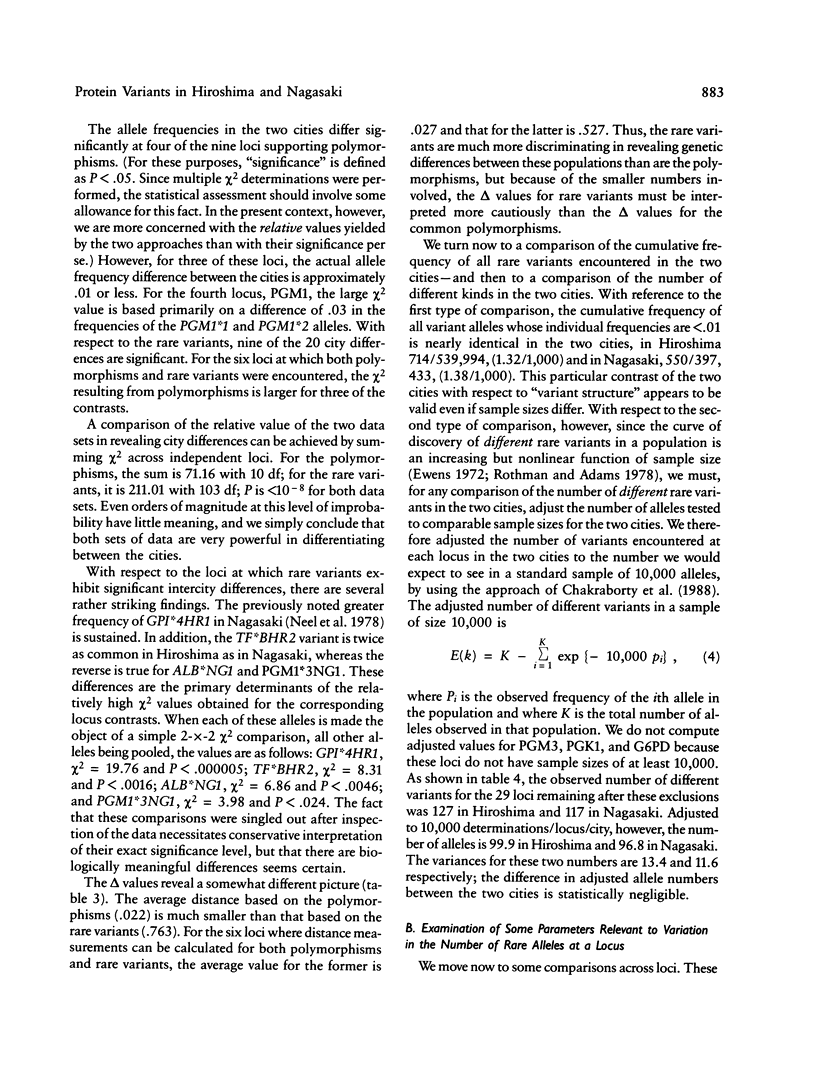

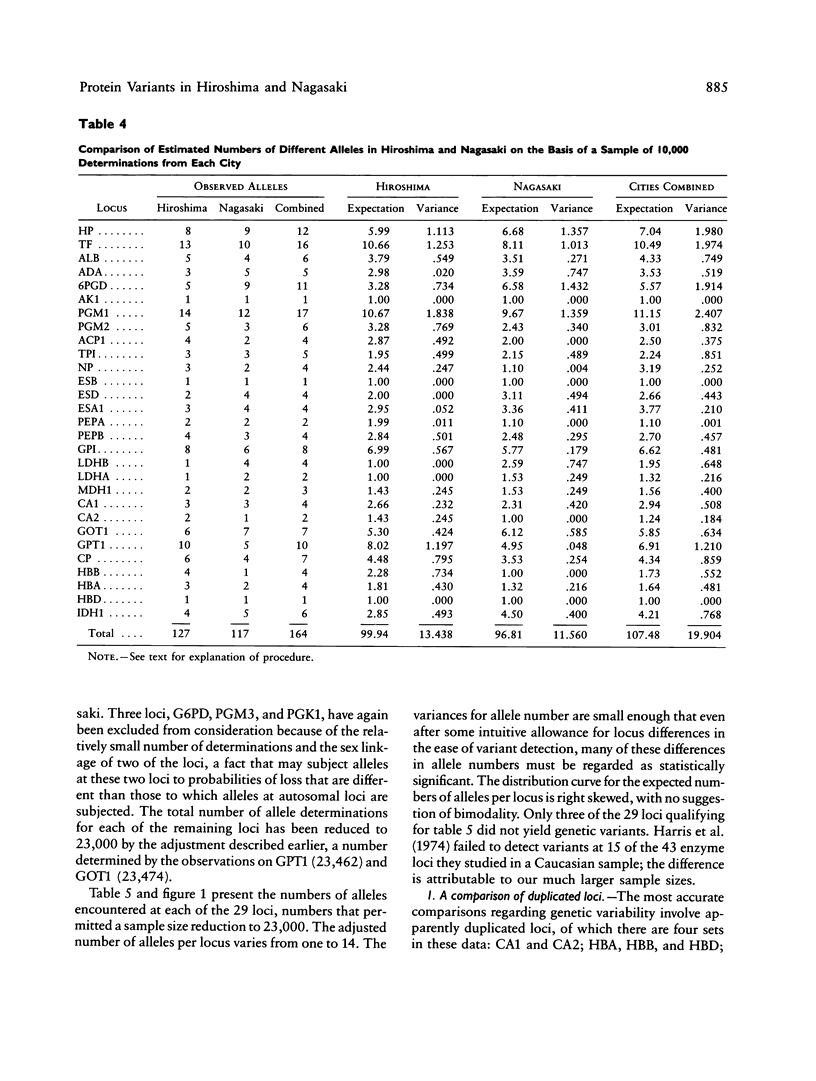
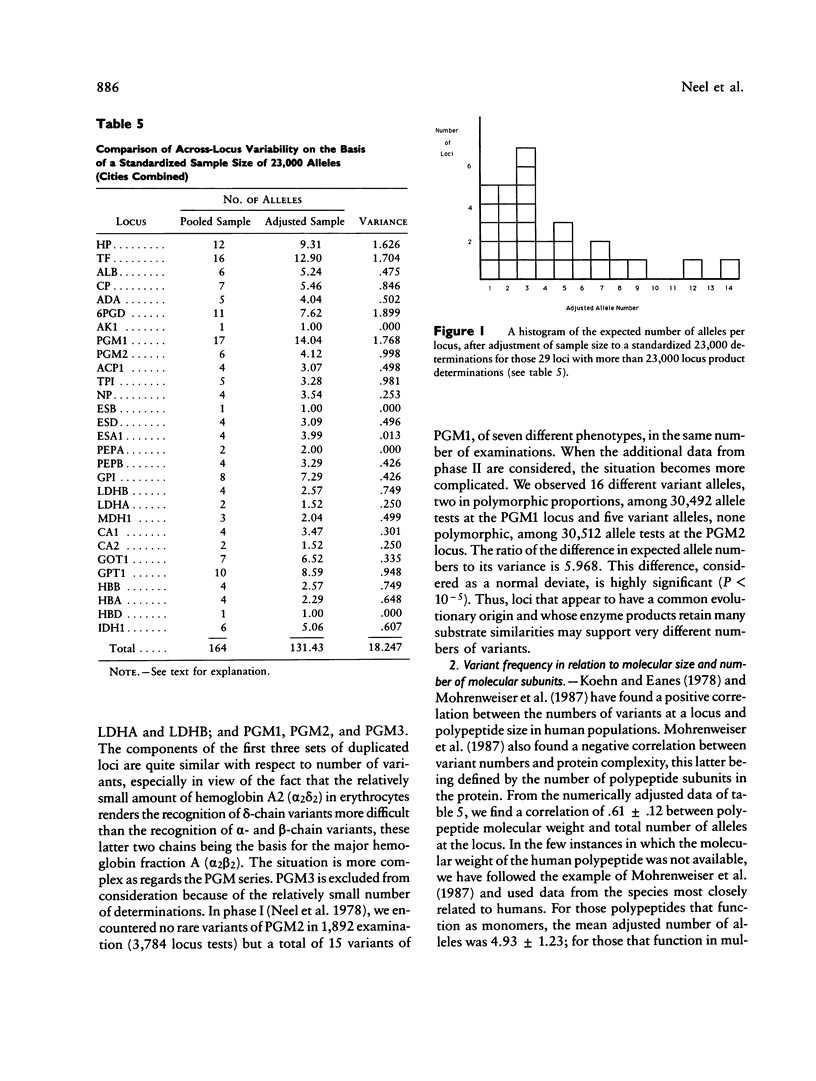

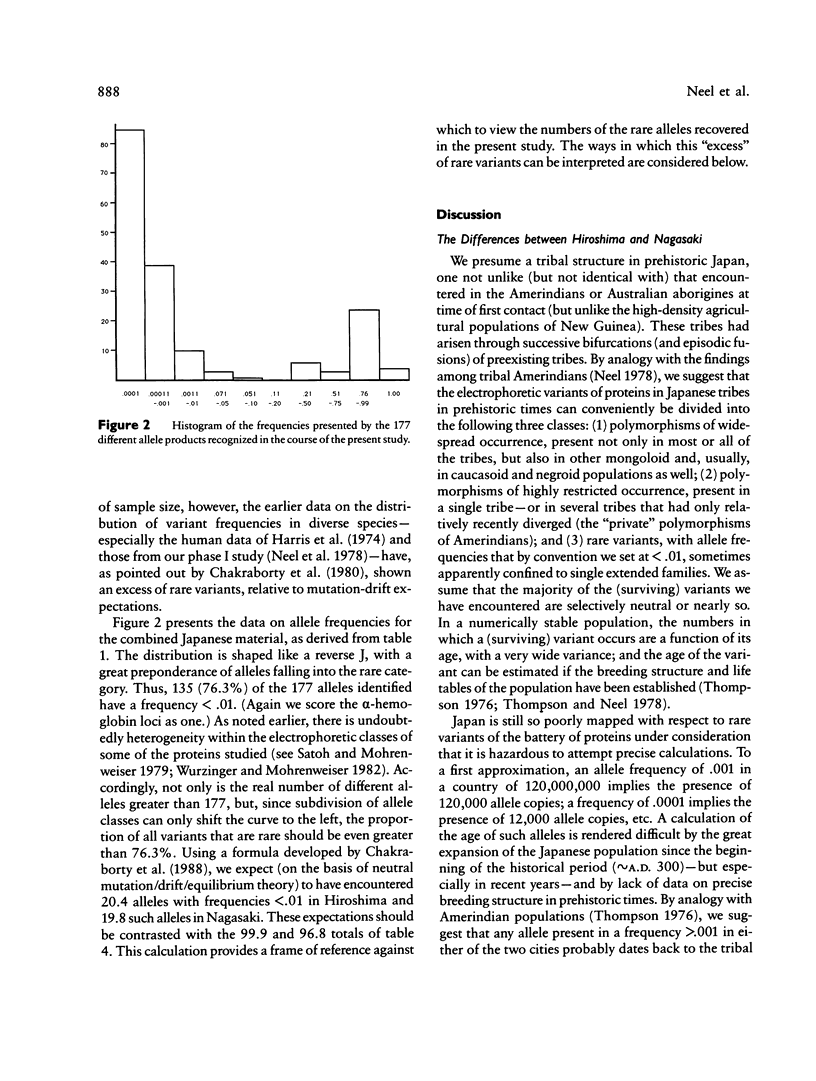
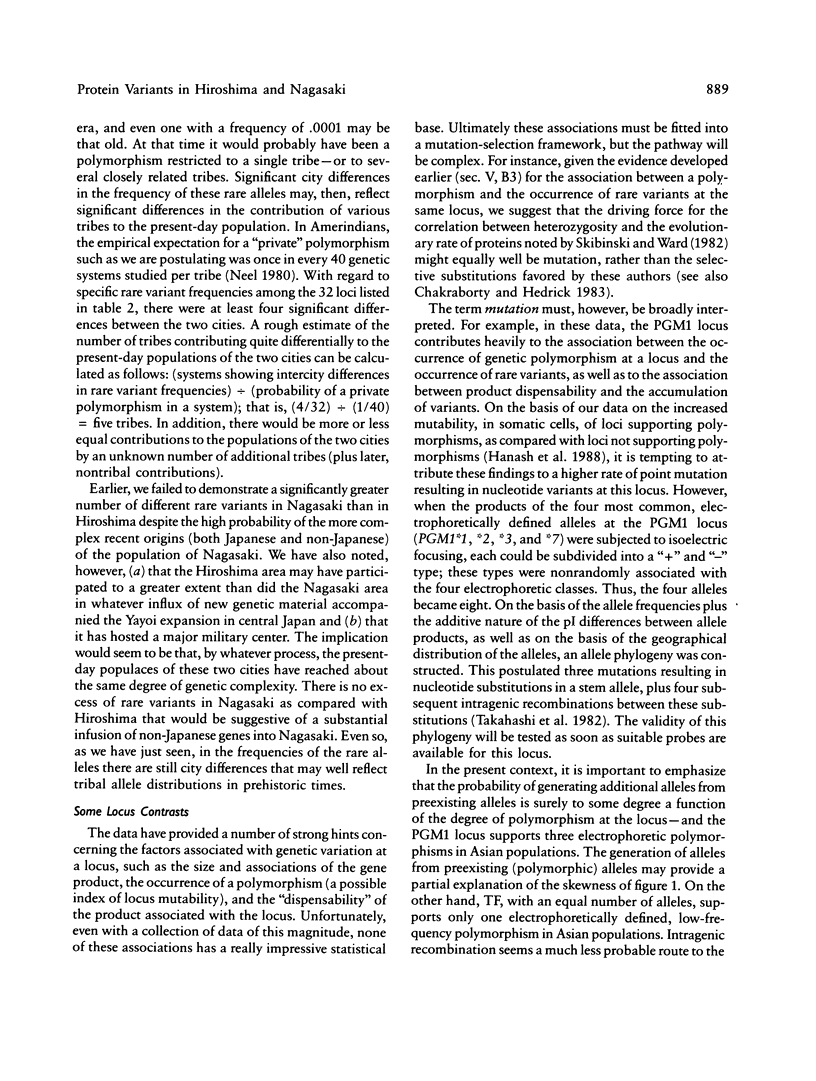

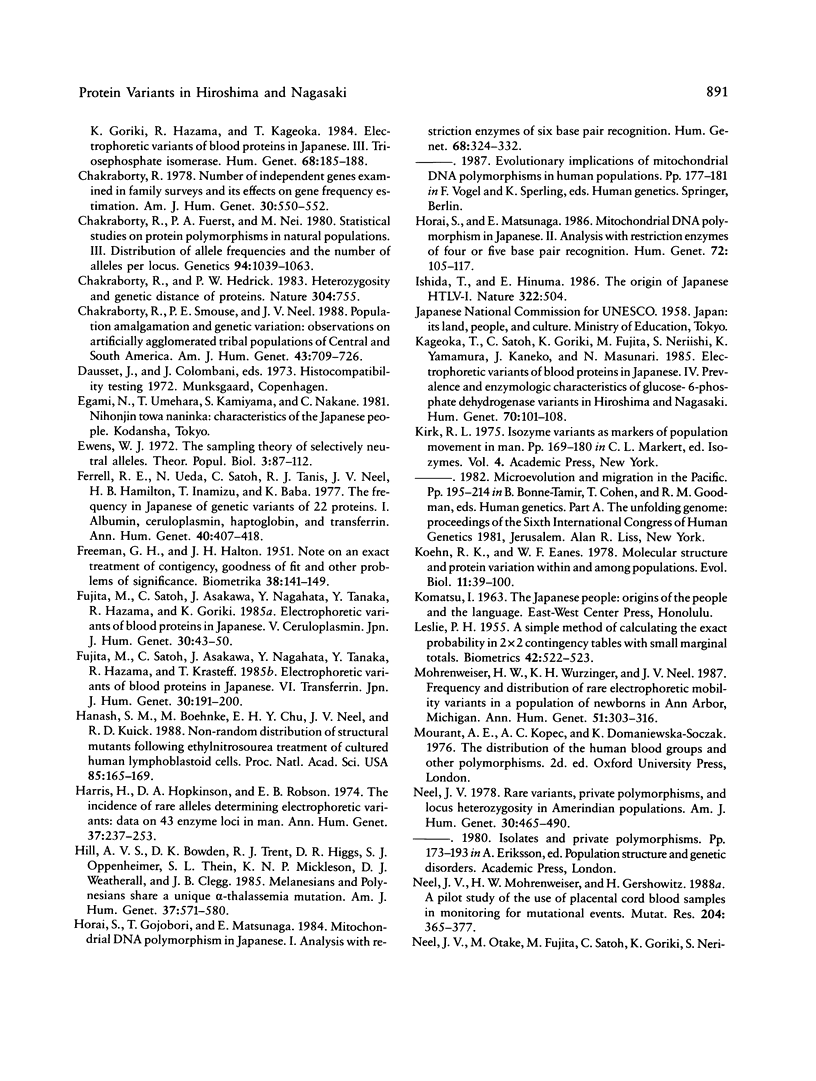
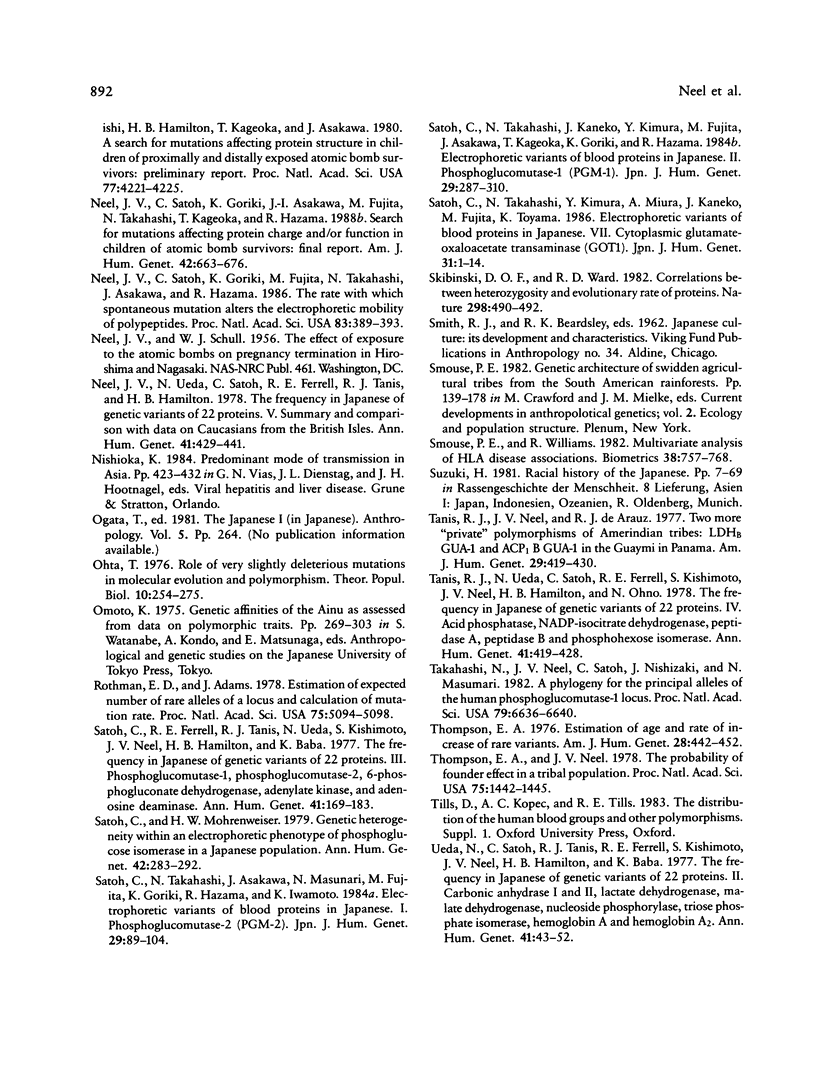
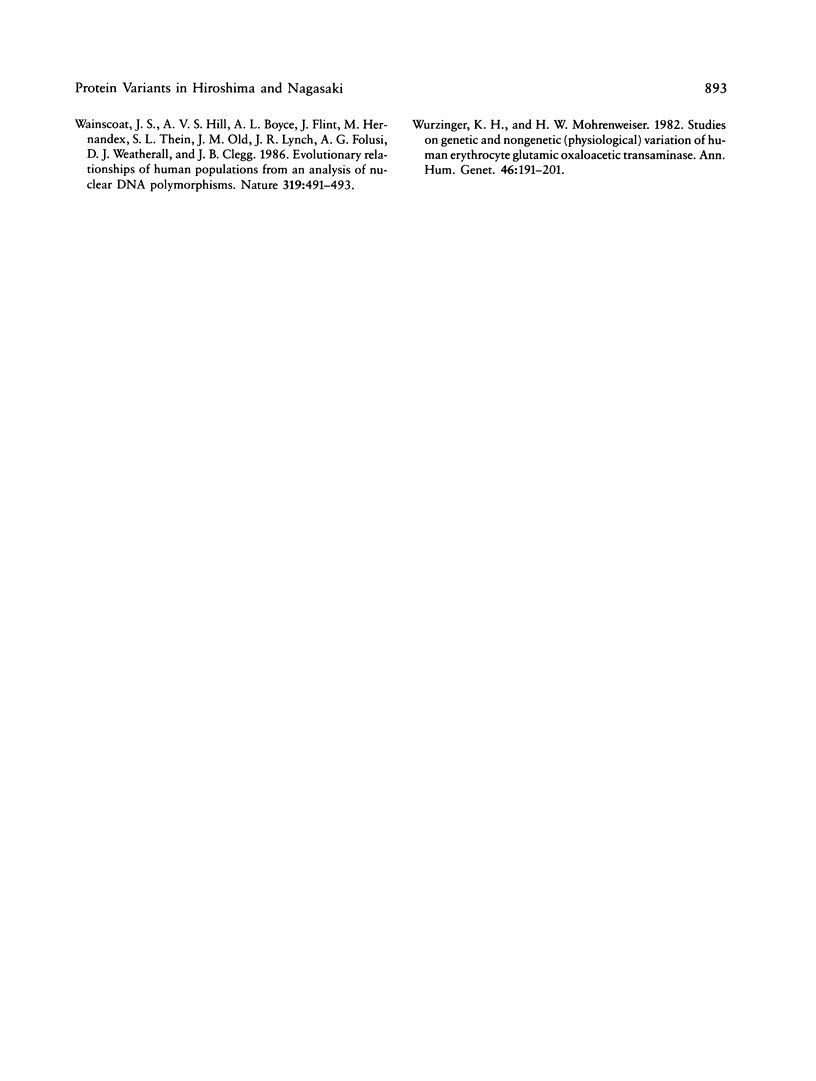
Selected References
These references are in PubMed. This may not be the complete list of references from this article.
- Asakawa J., Satoh C., Takahashi N., Fujita M., Kaneko J., Goriki K., Hazama R., Kageoka T. Electrophoretic variants of blood proteins in Japanese. III. Triosephosphate isomerase. Hum Genet. 1984;68(2):185–188. doi: 10.1007/BF00279312. [DOI] [PubMed] [Google Scholar]
- Chakraborty R., Fuerst P. A., Nei M. Statistical Studies on Protein Polymorphism in Natural Populations. III. Distribution of Allele Frequencies and the Number of Alleles per Locus. Genetics. 1980 Apr;94(4):1039–1063. doi: 10.1093/genetics/94.4.1039. [DOI] [PMC free article] [PubMed] [Google Scholar]
- Chakraborty R., Hedrick P. W. Heterozygosity and genetic distance of proteins. Nature. 1983 Aug 25;304(5928):755–756. doi: 10.1038/304755a0. [DOI] [PubMed] [Google Scholar]
- Chakraborty R. Number of independent genes examined in family surveys and its effect on gene frequency estimation. Am J Hum Genet. 1978 Sep;30(5):550–552. [PMC free article] [PubMed] [Google Scholar]
- Chakraborty R., Smouse P. E., Neel J. V. Population amalgamation and genetic variation: observations on artificially agglomerated tribal populations of Central and South America. Am J Hum Genet. 1988 Nov;43(5):709–725. [PMC free article] [PubMed] [Google Scholar]
- Ewens W. J. The sampling theory of selectively neutral alleles. Theor Popul Biol. 1972 Mar;3(1):87–112. doi: 10.1016/0040-5809(72)90035-4. [DOI] [PubMed] [Google Scholar]
- FREEMAN G. H., HALTON J. H. Note on an exact treatment of contingency, goodness of fit and other problems of significance. Biometrika. 1951 Jun;38(1-2):141–149. [PubMed] [Google Scholar]
- Ferrell R. E., Ueda N., Satoh C., Tanis R. J., Neel J. V., Hamilton H. B., Inamizu T., Baba K. The frequency in Japanese of genetic variants of 22 proteins. I. Albumin, ceruloplasmin, haptoglobin, and transferrin. Ann Hum Genet. 1977 May;40(4):407–418. [PubMed] [Google Scholar]
- Fujita M., Satoh C., Asakawa J., Nagahata Y., Tanaka Y., Hazama R., Goriki K. Electrophoretic variants of blood proteins in Japanese. V. Ceruloplasmin. Jinrui Idengaku Zasshi. 1985 Jun;30(2):43–50. doi: 10.1007/BF01873576. [DOI] [PubMed] [Google Scholar]
- Fujita M., Satoh C., Asakawa J., Nagahata Y., Tanaka Y., Hazama R., Krasteff T. Electrophoretic variants of blood proteins in Japanese. VI. Transferrin. Jinrui Idengaku Zasshi. 1985 Sep;30(3):191–200. doi: 10.1007/BF01876469. [DOI] [PubMed] [Google Scholar]
- Hanash S. M., Boehnke M., Chu E. H., Neel J. V., Kuick R. D. Nonrandom distribution of structural mutants in ethylnitrosourea-treated cultured human lymphoblastoid cells. Proc Natl Acad Sci U S A. 1988 Jan;85(1):165–169. doi: 10.1073/pnas.85.1.165. [DOI] [PMC free article] [PubMed] [Google Scholar]
- Harris H., Hopkinson D. A., Robson E. B. The incidence of rare alleles determining electrophoretic variants: data on 43 enzyme loci in man. Ann Hum Genet. 1974 Jan;37(3):237–253. doi: 10.1111/j.1469-1809.1974.tb01832.x. [DOI] [PubMed] [Google Scholar]
- Hill A. V., Bowden D. K., Trent R. J., Higgs D. R., Oppenheimer S. J., Thein S. L., Mickleson K. N., Weatherall D. J., Clegg J. B. Melanesians and Polynesians share a unique alpha-thalassemia mutation. Am J Hum Genet. 1985 May;37(3):571–580. [PMC free article] [PubMed] [Google Scholar]
- Horai S., Gojobori T., Matsunaga E. Mitochondrial DNA polymorphism in Japanese. I. Analysis with restriction enzymes of six base pair recognition. Hum Genet. 1984;68(4):324–332. doi: 10.1007/BF00292594. [DOI] [PubMed] [Google Scholar]
- Horai S., Matsunaga E. Mitochondrial DNA polymorphism in Japanese. II. Analysis with restriction enzymes of four or five base pair recognition. Hum Genet. 1986 Feb;72(2):105–117. doi: 10.1007/BF00283927. [DOI] [PubMed] [Google Scholar]
- Ishida T., Hinuma Y. The origin of Japanese HTLV-I. Nature. 1986 Aug 7;322(6079):504–504. doi: 10.1038/322504a0. [DOI] [PubMed] [Google Scholar]
- Kageoka T., Satoh C., Goriki K., Fujita M., Neriishi S., Yamamura K., Kaneko J., Masunari N. Electrophoretic variants of blood proteins in Japanese. IV. Prevalence and enzymologic characteristics of glucose-6-phosphate dehydrogenase variants in Hiroshima and Nagasaki. Hum Genet. 1985;70(2):101–108. doi: 10.1007/BF00273066. [DOI] [PubMed] [Google Scholar]
- Mohrenweiser H. W., Wurzinger K. H., Neel J. V. Frequency and distribution of rare electrophoretic mobility variants in a population of human newborns in Ann Arbor, Michigan. Ann Hum Genet. 1987 Oct;51(Pt 4):303–316. doi: 10.1111/j.1469-1809.1987.tb01065.x. [DOI] [PubMed] [Google Scholar]
- Neel J. V. Rare variants, private polymorphisms, and locus heterozygosity in Amerindian populations. Am J Hum Genet. 1978 Sep;30(5):465–490. [PMC free article] [PubMed] [Google Scholar]
- Neel J. V., Satoh C., Goriki K., Asakawa J., Fujita M., Takahashi N., Kageoka T., Hazama R. Search for mutations altering protein charge and/or function in children of atomic bomb survivors: final report. Am J Hum Genet. 1988 May;42(5):663–676. [PMC free article] [PubMed] [Google Scholar]
- Neel J. V., Satoh C., Goriki K., Fujita M., Takahashi N., Asakawa J., Hazama R. The rate with which spontaneous mutation alters the electrophoretic mobility of polypeptides. Proc Natl Acad Sci U S A. 1986 Jan;83(2):389–393. doi: 10.1073/pnas.83.2.389. [DOI] [PMC free article] [PubMed] [Google Scholar]
- Neel J. V., Satoh C., Hamilton H. B., Otake M., Goriki K., Kageoka T., Fujita M., Neriishi S., Asakawa J. Search for mutations affecting protein structure in children of atomic bomb survivors: preliminary report. Proc Natl Acad Sci U S A. 1980 Jul;77(7):4221–4225. doi: 10.1073/pnas.77.7.4221. [DOI] [PMC free article] [PubMed] [Google Scholar]
- Neel J. V., Ueda N., Satoh C., Ferrell R. E., Tanis R. J., Hamilton H. B. The frequency in Japanese of genetic variants of 22 proteins. V. Summary and comparison with data on Caucasians from the British Isles. Ann Hum Genet. 1978 May;41(4):429–441. doi: 10.1111/j.1469-1809.1978.tb00913.x. [DOI] [PubMed] [Google Scholar]
- Ohta T. Role of very slightly deleterious mutations in molecular evolution and polymorphism. Theor Popul Biol. 1976 Dec;10(3):254–275. doi: 10.1016/0040-5809(76)90019-8. [DOI] [PubMed] [Google Scholar]
- Rothman E. D., Adams J. Estimation of expected number of rare alleles of a locus and calculation of mutation rate. Proc Natl Acad Sci U S A. 1978 Oct;75(10):5094–5098. doi: 10.1073/pnas.75.10.5094. [DOI] [PMC free article] [PubMed] [Google Scholar]
- Satoh C., Ferrell R. E., Tanis R. J., Ueda N., Kishimoto S., Neel J. V., Hamilton H. B., Baba K. The frequency in Japanese of genetic variants of 22 proteins. III. Phosphoglucomutase-1, phosphoglucomutase-2, 6-phosphogluconate dehydrogenase, adenylate kinase, and adenosine deaminase. Ann Hum Genet. 1977 Oct;41(2):169–183. doi: 10.1111/j.1469-1809.1977.tb01912.x. [DOI] [PubMed] [Google Scholar]
- Satoh C., Mohrenweiser H. W. Genetic heterogeneity within an electrophoretic phenotype of phosphoglucose isomerase in a Japanese population. Ann Hum Genet. 1979 Jan;42(3):283–292. doi: 10.1111/j.1469-1809.1979.tb00662.x. [DOI] [PubMed] [Google Scholar]
- Satoh C., Takahashi N., Asakawa J., Masunari N., Fujita M., Goriki K., Hazama R., Iwamoto K. Electrophoretic variants of blood proteins in Japanese. I. Phosphoglucomutase-2 (PGM2). Jinrui Idengaku Zasshi. 1984 Jun;29(2):89–104. doi: 10.1007/BF01873529. [DOI] [PubMed] [Google Scholar]
- Satoh C., Takahashi N., Kaneko J., Kimura Y., Fujita M., Asakawa J., Kageoka T., Goriki K., Hazama R. Electrophoretic variants of blood proteins in Japanese. II. Phosphoglucomutase-1 (PGM1). Jinrui Idengaku Zasshi. 1984 Sep;29(3):287–310. doi: 10.1007/BF01871246. [DOI] [PubMed] [Google Scholar]
- Satoh C., Takahashi N., Kimura Y., Miura A., Kaneko J., Fujita M., Toyama K. Electrophoretic variants of blood proteins in Japanese. VII. Cytoplasmic glutamate-oxaloacetate transaminase (GOT1). Jinrui Idengaku Zasshi. 1986 Mar;31(1):1–14. doi: 10.1007/BF01876796. [DOI] [PubMed] [Google Scholar]
- Smouse P. E., Williams R. C. Multivariate analysis of HLA-disease associations. Biometrics. 1982 Sep;38(3):757–768. [PubMed] [Google Scholar]
- Takahashi N., Neel J. V., Satoh C., Nishizaki J., Masunari N. A phylogeny for the principal alleles of the human phosphoglucomutase-1 locus. Proc Natl Acad Sci U S A. 1982 Nov;79(21):6636–6640. doi: 10.1073/pnas.79.21.6636. [DOI] [PMC free article] [PubMed] [Google Scholar]
- Tanis R. J., Neel J. V., Torres de Arauz R. Two more "private" polymorphisms of Amerindian tribes: LDHb GUA-1 and ACP1 B GUA-1 in the Guaymi in Panama. Am J Hum Genet. 1977 Sep;29(5):419–430. [PMC free article] [PubMed] [Google Scholar]
- Tanis R. J., Ueda N., Satoh C., Ferrell R. E., Kishi-Moto S., Neel J. V., Hamilton H. B., Ohno N. The frequency in Japanese of genetic variants of 22 proteins. IV. Acid phosphatase, NADP-isocitrate dehydrogenase, peptidase A, peptidase B and phosphohexose isomerase. Ann Hum Genet. 1978 May;41(4):419–428. doi: 10.1111/j.1469-1809.1978.tb00912.x. [DOI] [PubMed] [Google Scholar]
- Thompson E. A. Estimation of age and rate of increase of rare variants. Am J Hum Genet. 1976 Sep;28(5):442–452. [PMC free article] [PubMed] [Google Scholar]
- Thompson E. A., Neel J. V. Probability of founder effect in a tribal population. Proc Natl Acad Sci U S A. 1978 Mar;75(3):1442–1445. doi: 10.1073/pnas.75.3.1442. [DOI] [PMC free article] [PubMed] [Google Scholar]
- Ueda N., Satoh C., Tanis R. J., Ferrell R. E., Kishimoto S., Neel J. V., Hamilton H. B., Baba K. The frequency in Japanese of genetic variants of 22 proteins II. Carbonic anhydrase I and II, lactate dehydrogenase, malate dehydrogenase, nucleoside phosphorylase, triose phosphate isomerase, haemoglobin A and haemoglobin A2. Ann Hum Genet. 1977 Jul;41(1):43–52. doi: 10.1111/j.1469-1809.1977.tb01960.x. [DOI] [PubMed] [Google Scholar]
- Wainscoat J. S., Hill A. V., Boyce A. L., Flint J., Hernandez M., Thein S. L., Old J. M., Lynch J. R., Falusi A. G., Weatherall D. J. Evolutionary relationships of human populations from an analysis of nuclear DNA polymorphisms. Nature. 1986 Feb 6;319(6053):491–493. doi: 10.1038/319491a0. [DOI] [PubMed] [Google Scholar]
- Wurzinger K. H., Mohrenweiser H. W. Studies on the genetic and non-genetic (physiological) variation of human erythrocyte glutamic oxaloacetic transaminase. Ann Hum Genet. 1982 Jul;46(Pt 3):191–201. doi: 10.1111/j.1469-1809.1982.tb00711.x. [DOI] [PubMed] [Google Scholar]


